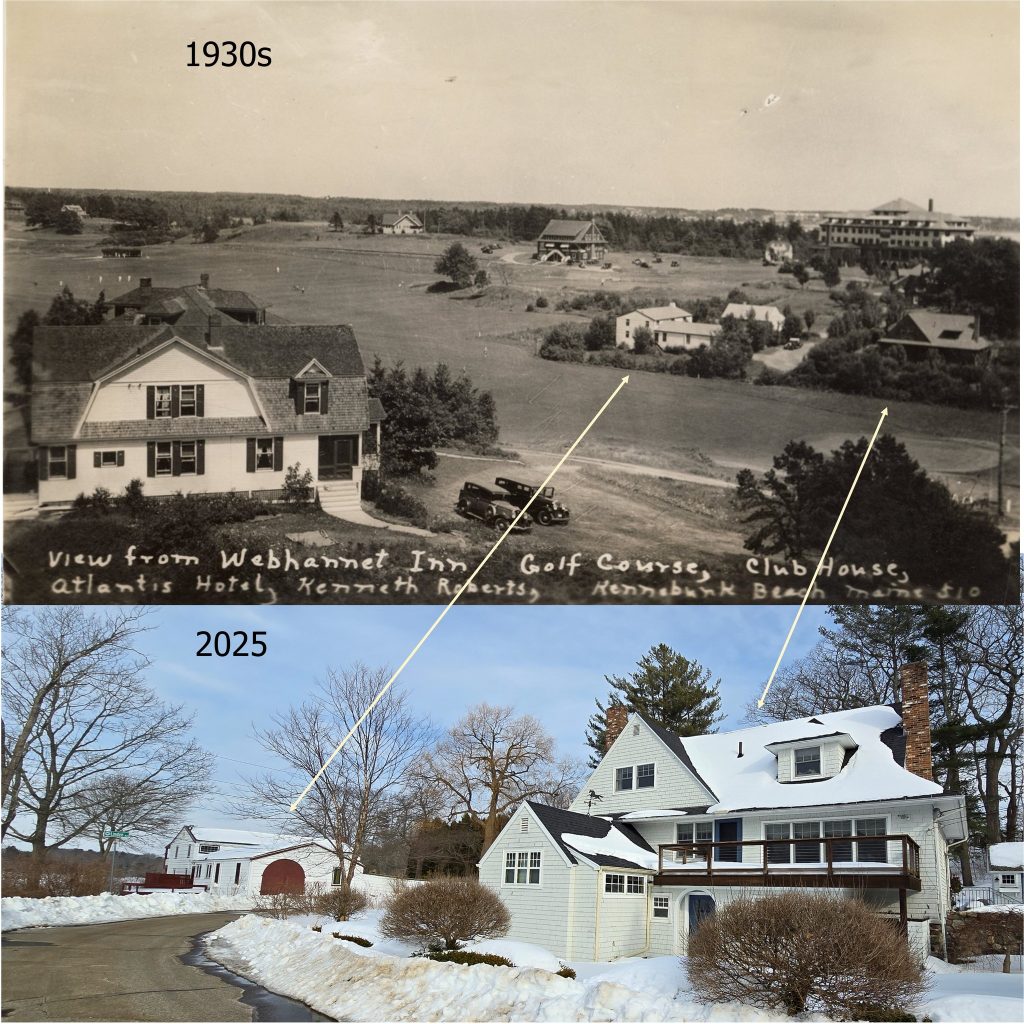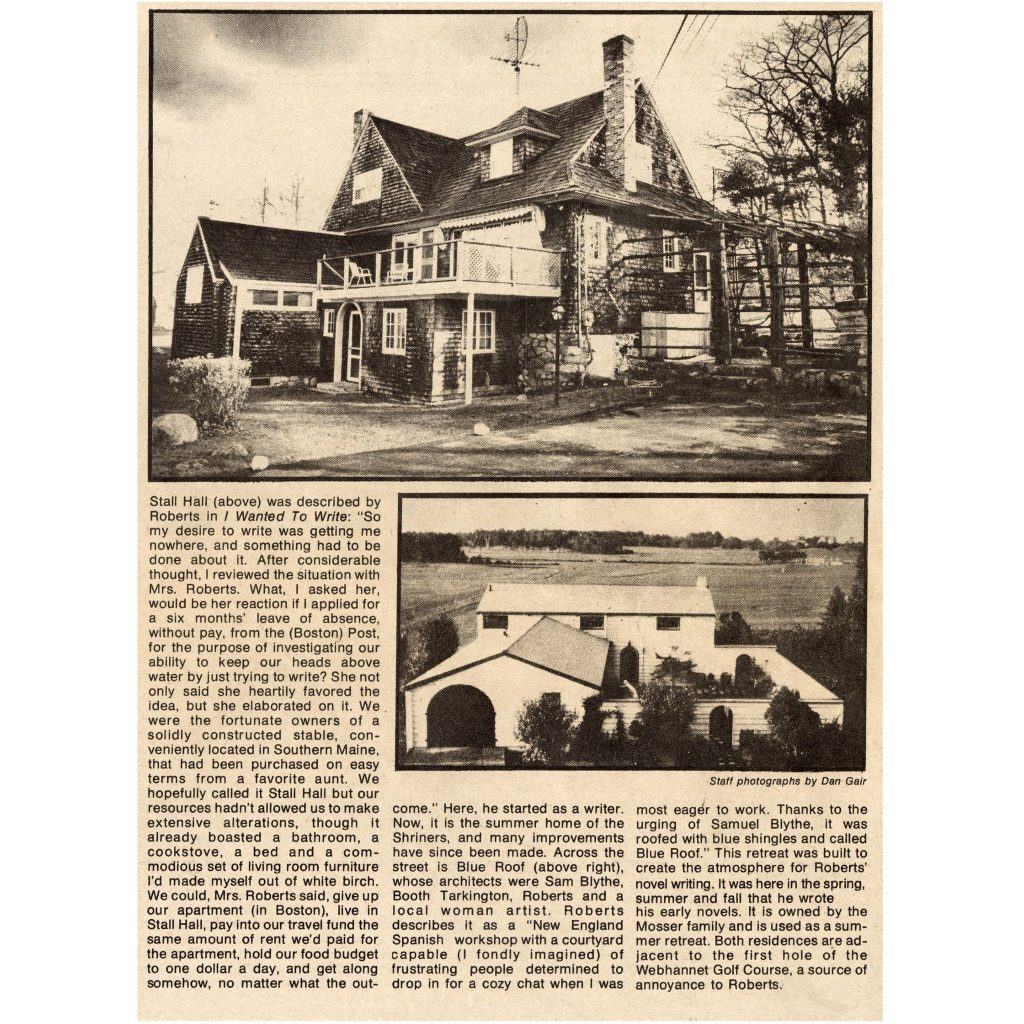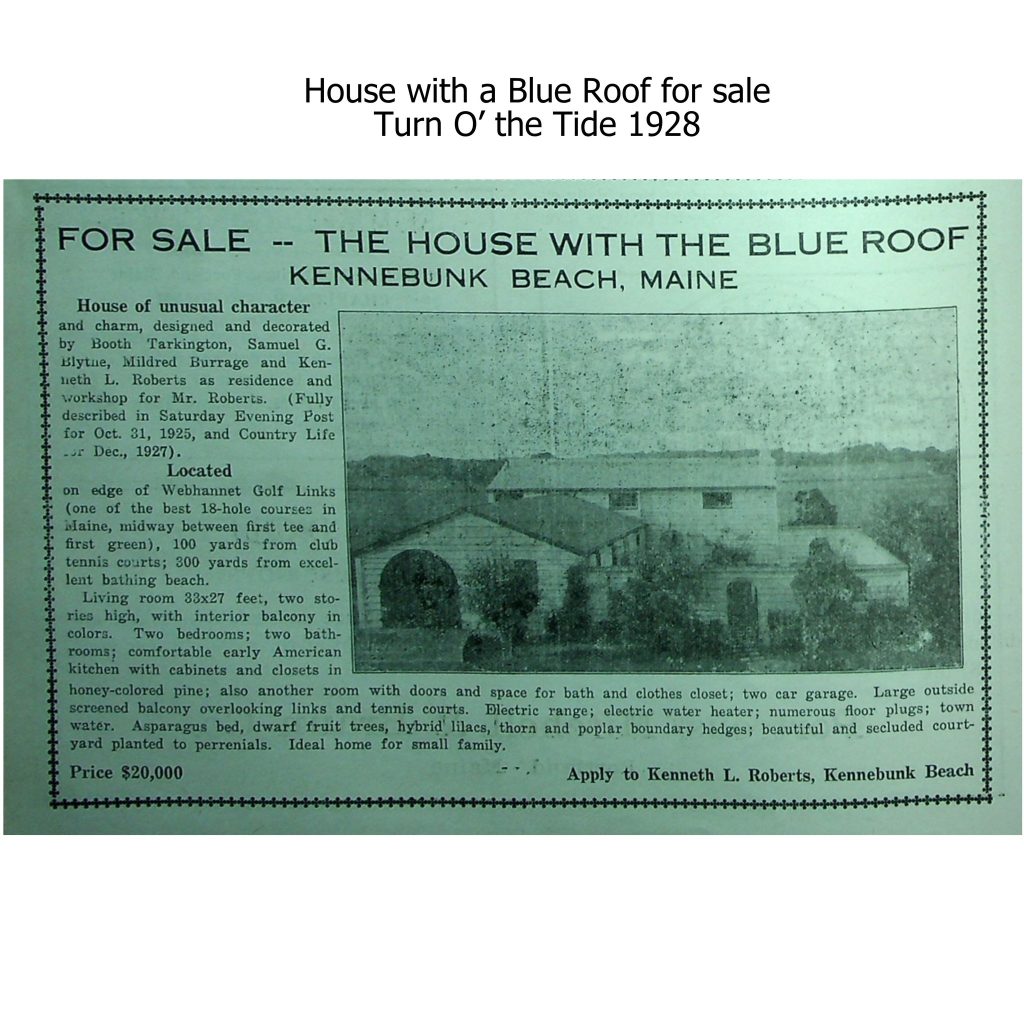Retreats for Livestock and Literati at Kennebunk Beach
Kenneth L. Roberts is best known for his set of historical novels, The Chronicles of Arundel, but he was still a young newspaperman when he bought an old stable at Kennebunk Beach from his wife’s aunt in 1919. Roberts jokingly dubbed it ‘Stablehurst’ but His friends, Booth Tarkington and Hugh Kahley thought the name lacked elegance. They christened it ‘Stall Hall.’ “Though our resources hadn’t allowed us to make extensive alterations,” Roberts wrote in his book ‘I Wanted to Write’ “It already boasted a bathroom, a cookstove, a bed, and a commodious set of living-room furniture I’d made myself out of white birch.”
Across the street from Stall Hall, blocking their pastoral view of the Webhannet golf links, stood a particularly unsightly old barn that had been converted into a six-door garage and multiplex for neighborhood chauffeurs. Roberts described it in Country Life as a “bilous yellow with trimming of soiled and congested red and poisonous green.” When he learned it was for sale in 1925 and that several potential buyers were contemplating even more objectionable uses for the old barn he purchased it himself for $1,500 and set about deconstructing it for its antique building materials.
Roberts himself sketched out a low-slung writing studio/garage with a courtyard to keep curious fans from his doorway. He soon discovered just how little he knew about architectural design when the builders started asking him for measurements. He enlisted his friends to help him design a house using his already paid for building materials from the old barn.
Artist Mildred Burrage advocated for a Spanish Mexican fireplace, author Booth Tarkington kept adding large expensive windows for golfers to aim at, Samuel G. Blythe insisted that the roof must be blue.
The Blue Roof was locally advertised for sale in 1928 but it apparently did not sell as the committee-built house is still in the hands of Roberts descendants. Stall Hall was gradually improved over the years. Roberts detailed its evolution in a 1928 article he wrote for The Saturday Evening Post.






Leave a Reply